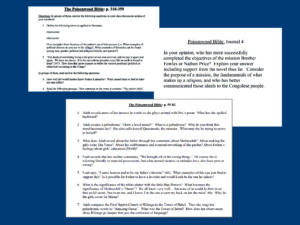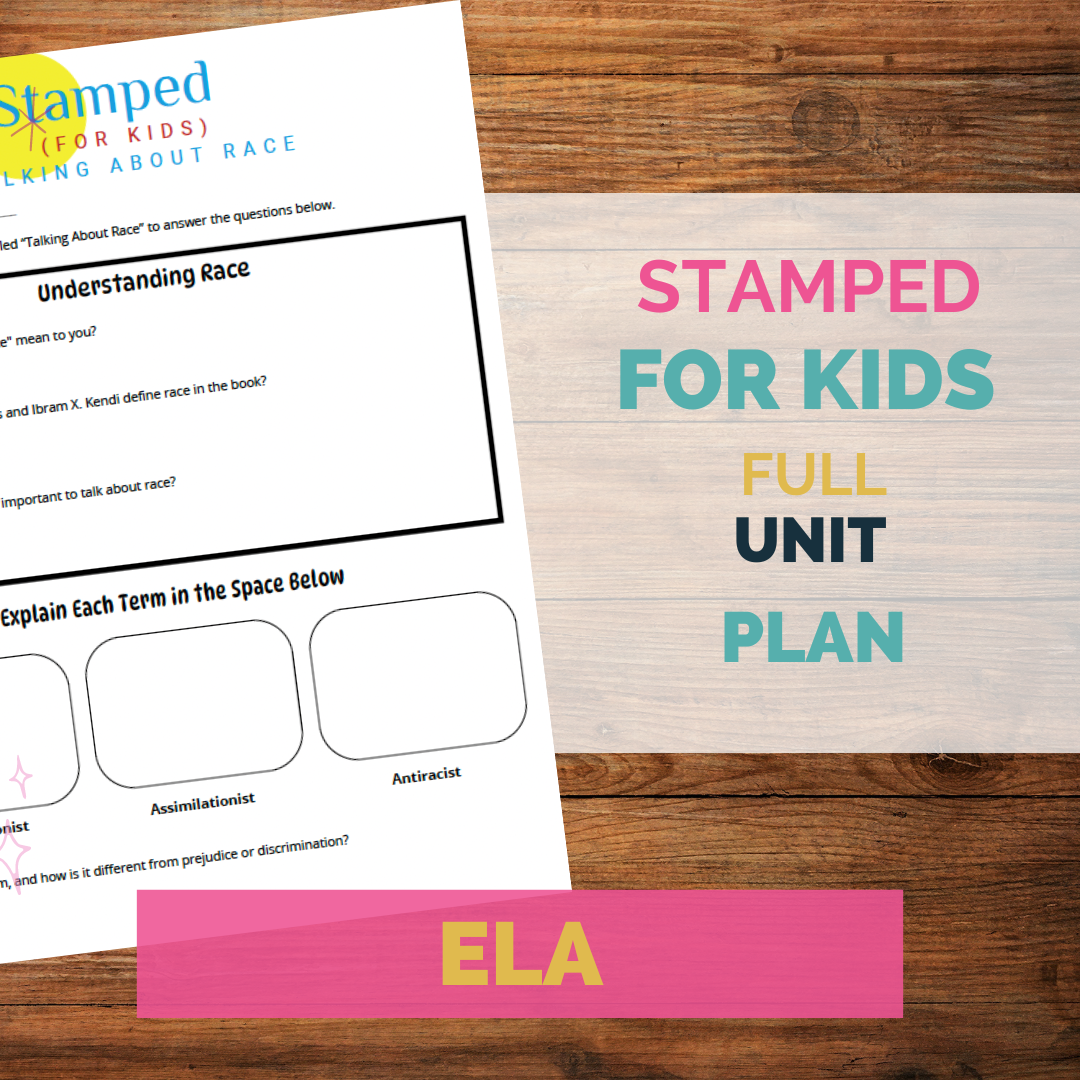Admittedly, the first two times I attempted to read The Poisonwood Bible by Barbara Kingsolver, I just couldn’t get through it. Rachel’s narcissistic personality drove me crazy and don’t even get me started on Nathan Price!
Everyone told me how amazing the book was, how Kingsolver did a beautiful job with the imagery and writing, and the storyline was both complex and moving. It wasn’t until my third crack at reading the novel that it finally clicked. It was like one of those brilliant ah-ha moments Oprah always talked about! I finally understood why everyone raved about the novel. The Poisonwood Bible is full of vivid imagery and dynamic characters that made me want to keep reading.
When I finally decided to teach the novel to my students, I wanted to ensure they were hooked right away, so I tried to find some engaging approaches so they didn’t quit the book like I did.
I developed a novel study unit plan for The Poisonwood Bible that was more than just a chronological overview of the plot and storyline. Instead, my unit helped students dive into the following literary beauty of the novel.

Exploring Language in Poisonwood Bible
Kingsolver is a master at using language for purpose within her novel. For example, through the unique perspectives of the Price women, she is able to intentionally create characters that each have their own language patterns.
For example, Rachel Price is one of the most narcissistic and selfish characters in the novel. As the oldest Price sister, she wants everyone to take her seriously as a 16-year-old young adult. However, by analyzing her language patterns and use of malapropisms, readers quickly figure out she is ignorant and uninformed. Most of the politics introduced in the early parts of the novel come through the eyes of Rachel of Ruth May. My students have a great time searching for as many malapropisms as they can find as they read.
Leah, on the other hand, is the character presents a very literal and loyal voice early in the novel. While Rachel misuses language and speaks in hyperbole, Leah is very to-the-point and takes everything at face value. Readers very quickly figure out that in order to gain a reliable perspective on political or family events, Leah is the character who will most accurately tell readers what really occurred. Eventually, through Anatole, Leah learns Congolese words it helps expose her to the harsh realities of her family life and the Congolese people.
As a contrast to Leah, Adah is the cynical daughter who serves the role projecting doubt and skepticism into the novel. Through her use of palindromes, she forces readers to view the events occurring in the novel “backwards” and through her questioning perspective. While Leah claims to be the most faithful and religions daughter, it’s mostly through Adah’s vignettes that the reader learns about the religious connections, origins, and connections.
Finally, Ruth May’s use of language shows the youth and innocence of a 5-year-old who hasn’t been tainted by adult judgment or bias. Whether it’s Ruth May’s innocent view of the “Jimmy Crow laws” or Eden Axelroot’s conversation with Father in the plan, her childish view brings an innocent dimension to the novel.
On many occasions, Ruth May teaches readers about the political situation occurring in the Congo; for example when we visits the doctor to fix her broken arm, she learns about the assassination attempt on Lumumba.
Exploring Macrocosm in The Poisonwood Bible
Early in the unit, I give my students a little history lesson on the Congo to help them understand some historical basics. The Congo was such a politically unstable country during the time period the novel take place and it’s important to help students see the big picture. We talk about key political figures and their impact and influence in the novel. Understanding those interactions sets the stage for making comparisons between the Congo and the complex relationships between the members of the Price family.
Exploring Microcosm in the Poisonwood Bible
There’s no question Nathan was a domineering father who ruled over his family much like Mobutu ruled over the Congo. At so many key points during the novel, readers can trace parallels between the Congo and the Congolese people to Nathan and the Price women. Their highs are high and their lows are tragically low. Through discussion questions, journal prompts, and activities, I try to guide my students through literary analysis comparing the macro level plot line of the Congolese history to the microcosm of the day-to-day life of the Price family.

Here are some examples of the macrocosm and microcosm parallels in the novel:
- When the Price family arrives in the *Congo, they are hopeful, excited and ready for a new yearlong adventure. At the same time, Patrice Lumumba is elected as prime minister and Joseph Kasavubu as president of the renamed Democratic Republic of the Congo. Promises are made and expectations are high for both the Congo and the Price family.
- As the Price family continues to spiral into despair and poverty, so does the Congo. Both are fighting against systems and leaders who are unable to provide for the people in their care. Through discussion questions, I encourage students to draw comparisons between events in the novel and the historical events occurring in the Congo at the time.
- Ruth May’s unfortunate and premature death coincides with Lumumba’s death. I use this journal prompt to help students begin to make connections between these two tragic events the macro level and micro level.
- Finally, the last third of the novel transcends a 20-year period, as the Price family continues to flounder and strive for healing, much like the Congo does under Motbuto’s rule. There are great opportunities to teach the concept of *fallacies of logic to students and have them trace the many ways in with Congolese leaders and Nathan Prices spun falsehoods through the novel.




